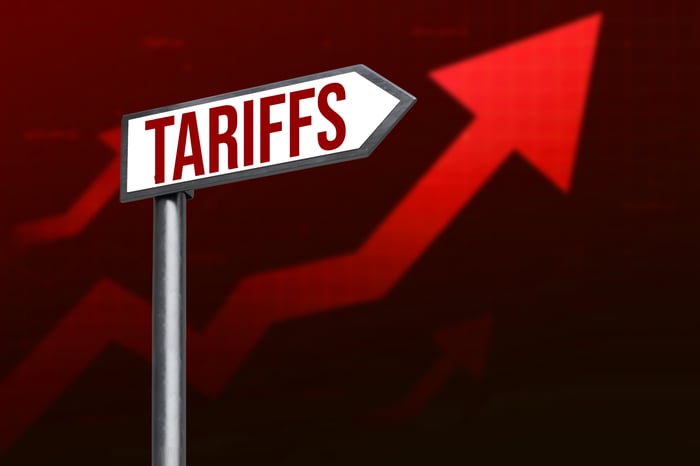Dollar Declines Amidst US-China Trade Tensions and Inflation Data
The dollar index (DXY00) fell sharply on Thursday, dropping by -1.84% and reaching a 6-1/4 month low. Concerns about the escalating US-China trade war negatively impacted the dollar, raising fears of economic derailment and stagflation. The US government increased total tariffs on China from 104% to 145% after China retaliated with 84% tariffs on US goods. This situation prompted a crisis of confidence in the dollar, as the renegotiation of US relationships with trading partners erodes its reserve-currency status. This has led some foreign investors to liquidate their dollar assets. Additionally, the dollar’s losses were amplified after US consumer prices for March rose less than anticipated, which signals a dovish policy stance from the Federal Reserve.
In labor market news, US weekly initial unemployment claims rose by +4,000 to 223,000, aligning with expectations. Meanwhile, continuing claims decreased by -43,000 to 1.850 million, indicating a stronger labor market than the anticipated 1.886 million.
March’s Consumer Price Index (CPI) increased by +2.4% year-over-year, which was below the anticipated +2.5% and marked the smallest rise in six months. Excluding food and energy, the March CPI increased by +2.8% year-over-year, also underperforming compared to expectations of +3.0% and reflecting the smallest increase in four years.
Kansas City Fed President Esther George stated the necessity to “prioritize reining in inflation” if the Fed must balance its target of price stability against its goal of full employment. Similarly, Dallas Fed President Lorie Logan emphasized the importance of preventing tariff-related price increases from leading to persistent inflation in order to achieve the Fed’s dual-mandate goals.
Market expectations for a -25 basis point rate cut after the May 6-7 FOMC meeting are now at 32%, slightly up from the 30% likelihood reported last week.
Euro Gains Ground as Dollar Weakens
The EUR/USD ( ^EURUSD ) surged by +1.98% on Thursday, reaching a 1-3/4 year high. The euro’s increase can be attributed to the dollar’s drop and President Trump’s decision to pause reciprocal tariffs, which may stabilize the Eurozone economy and reduce the need for ongoing ECB monetary easing. Currently, swaps are pricing in a 90% chance of a -25 basis point rate cut at the upcoming ECB policy meeting on April 17.
Yen Strengthens Amid Increased Safe Haven Demand
With a decline of -1.89%, the USD/JPY ( ^USDJPY ) fell sharply as the yen rallied, now hovering just below Wednesday’s 6-1/4 month high versus the dollar. The yen’s surge followed a stronger-than-expected rise in Japanese producer prices for March, a hawkish signal for Bank of Japan policy. Moreover, as tensions escalate between the US and China, demand for the yen as a safe haven has risen. Japan’s March PPI rose by +0.4% month-over-month and +4.2% year-over-year, exceeding expectations of +0.2% and +3.9%, respectively.
Precious Metals Rally on Dollar Weakness
June gold (GCM25) closed up +98.10 (+3.19%) on Thursday, while May silver (SIK25) increased by +0.344 (+1.13%). The precious metals market surged as gold prices climbed sharply following the dollar index’s slump to a 6-1/4 month low. Thursday’s stock sell-off also heightened safe-haven demand for these metals. The worsening US-China trade relations have further supported precious metal demand. Additionally, geopolitical tensions in the Middle East are boosting this demand, particularly following the breakdown of the Israel-Hamas ceasefire and threats of US strikes on Yemen’s Houthi rebels. Fund buying of gold has increased, noted by long positions in ETFs rising to a 1-1/2 year high as of Wednesday. However, the rise in silver prices is tempered by concerns that the trade war’s escalation could impact the global economy and reduce demand for industrial metals.
On the date of publication, Rich Asplund did not have (either directly or indirectly) positions in any of the securities mentioned in this article. All information and data in this article are solely for informational purposes. For more details, please visit the Barchart Disclosure Policy
here.
The views and opinions expressed herein are those of the author and do not necessarily reflect those of Nasdaq, Inc.

